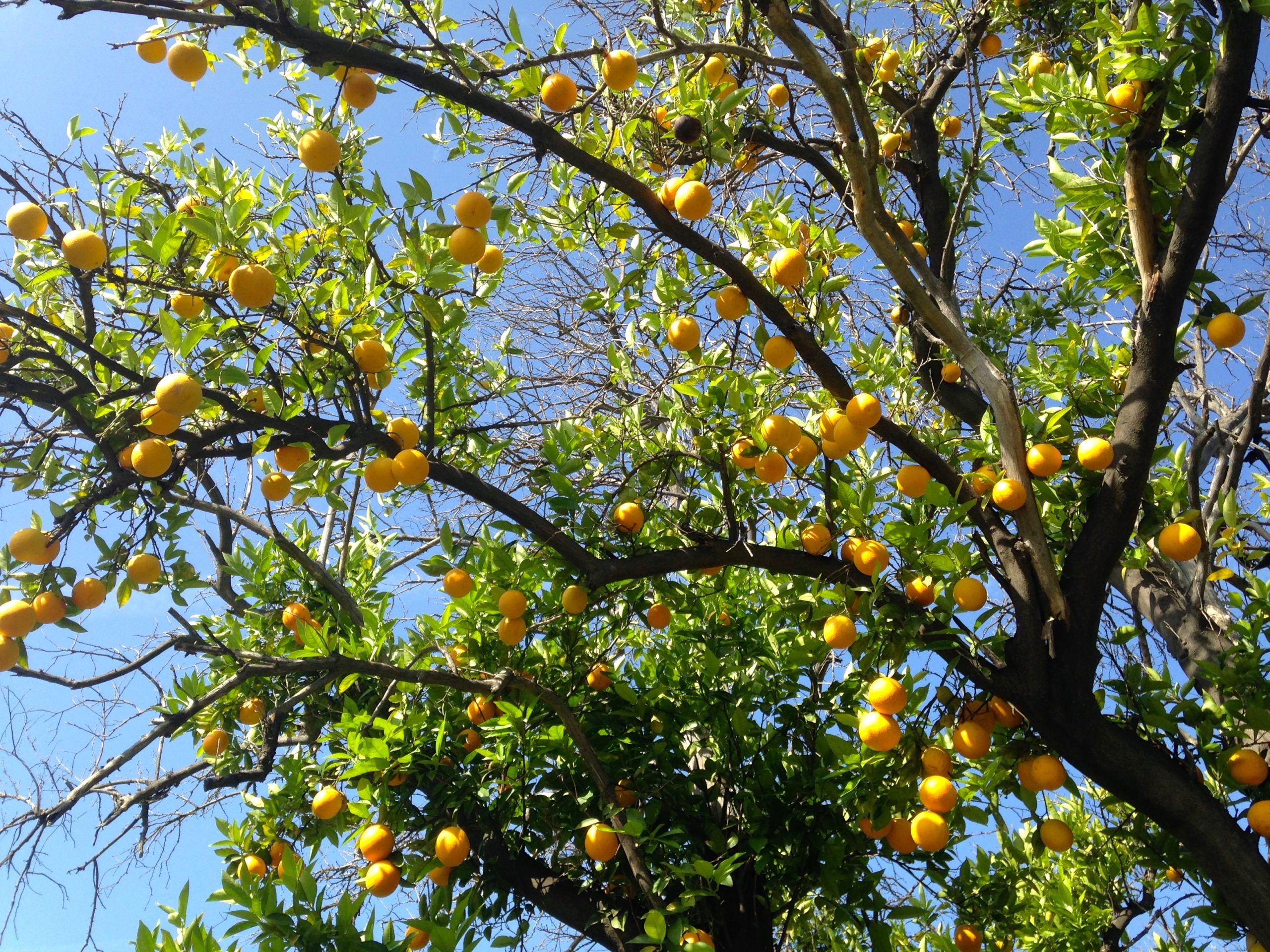Pruning Citrus Trees
Food Forward does not do any pruning, but we can offer some advice to homeowners who wish to prune on their own. While citrus trees require less pruning than most other fruit trees, pruning is great because it keeps your trees clear and your fruit accessible. You’ll thank yourself for the effort next time you want to pick some fresh fruit without getting an armful of thorns.

Pruning Terms & Definitions:
- Deadwood – These are easy to spot branches because they won’t have any green leaves on them and are usually very dry. If you bend them they should snap off because they are dry and no longer living.
- Basal shoots – Basal shoots grow from a plant’s roots and can become autonomous from the parent plant. See photo (A) at the bottom.
- Branch Collar – This is often visible swelling that forms at the base where it is attached to the parent plant or trunk. The wrinkling around this area is part of the tree’s defense mechanism against microorganisms. See photo (B) at the bottom.
- Gourmands – Long, thick, very vigorous branches that seem to suddenly appear in the canopy.
- Water Sprouts – Shoots that arise from the trunk of the tree (or older branches) from latent buds. Water sprouts are not as strong as natural tree growth and produce very little fruit, usually of poor quality. See photo (C) at the bottom
- Suckers– Many citrus trees are grafted onto another tree species’ rootstock. The point where the rootstock and citrus tree stock are grafted is called the bud union. If any stems grow below the bud union or from the rootstock, they are called suckers. See photo (D) at the bottom
Benefits of Pruning Citrus Trees:
– Make it easier to harvest. Reducing a tree’s height through pruning will make it easier to pick the fruit. Sometimes citrus trees can get so tall that even with a ladder, there is still some fruit that is out of reach.
–Keep the tree within your personal space confines. Whether the tree is starting to hang over your roof, is now blocking a path or is blocking sunlight for other plants, sometimes you just want the tree to stay in its place.
–There is a lot of deadwood. You can prune these branches because it will make it easier to reach the fruit when picking.
–Growth of Basal Shoots or Suckers. These should be removed as soon as they appear on your citrus tree because they will not be productive and will take away the trees nutrients.
–Growth of Gourmands or Water Sprouts. These branches use large amounts of water and nutrients. If they ever do produce fruit it is often of poor quality. Gourmands contribute little to the tree and should be removed at their base.
–To skirt up the tree. This is the act of pruning the lowest hanging branches on a tree. Some citrus trees, including Satsuma mandarins, tend to have long branches that hang to the ground, known as skirt branches. Skirt branches can impede weeding, fertilizer and compost application, and provide pathways for ants. Fruit that touches the ground is also susceptible to soil borne pathogens. You can skirt up the tree until the bottom branches hang about two feet off the ground
Pruning No-Nos:
-Don’t over-prune! Citrus trees are “closed canopy trees” which means the outside of the tree should have foliage all the way around. Citrus bark is very susceptible to sunburn so it should have little to no direct sunlight exposure. This is especially important in SoCal’s hot sun.
-Don’t prune the low level branches, unless they are touching the ground. This is where many citrus trees grow the best fruit so, by removing those branches, you are going to significantly reduce your fruit yield.
Pruning Technique:
Tools:
- Secateurs or hand pruners
- Loppers for branches larger than ½” diameter
- Pruning Saw
- A pole pruner may be useful for larger trees
About 6 inches from the branch collar, make the first cut from the bottom, about ⅓ of the way through the branch. Then move another inch or so along the branch and cut from the top down until the branch comes off. Make the third cut just after the branch collar. These first cuts are done so that a clean cut can be made at the branch collar and there is no tearing from the weight of the branch.
Time of Year to Prune:
Major pruning should take place after the risk of freeze has passed and before the summer heat (March-end of April in SoCal). Any winter maintenance should only be done on branches that are less than ¼” in diameter.
Disclaimer: This is just an introduction to citrus pruning to get you started. Please consult a professional before doing any large scale pruning especially pruning that involves very heavy branches or very tall trees.
